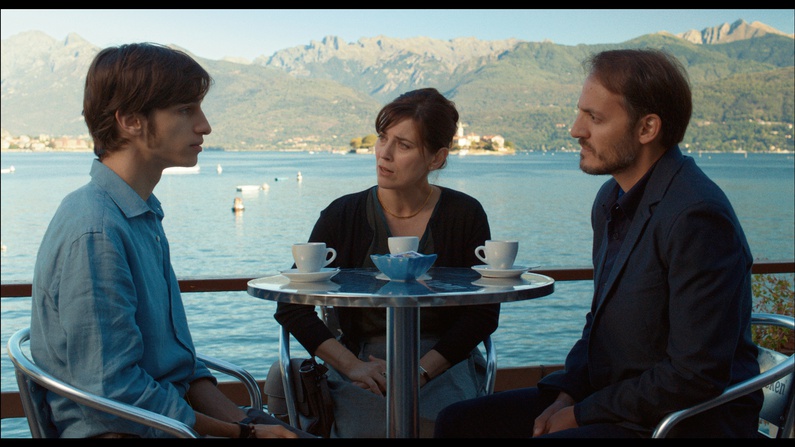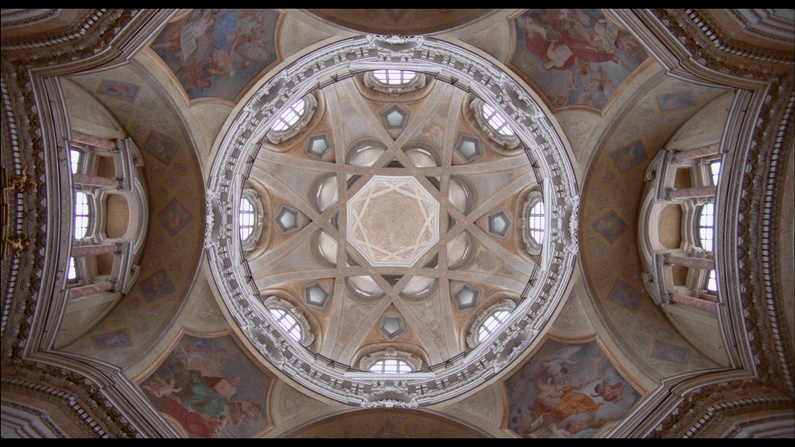
Cinema: 'La Sapienza' or the Baroque of truth
Published on
Translation by:
Alexandra DumbravaThe entire filmography and private world of Eugène Green converge in "La Sapienza" (2014), a film about how the human being and the society have fallen into some fraudulent situations but have also found freedom through this very same artificiality. For its unique style, the film is one of the most interesting releases of the season.
A film that is labelled as "independent" usually scares away a great part of the public. According to the common belief, this type of film ( as well as other manifestations of contemporary art) is hard to assimilate, as they are very often seen as boring and formulaic. However, on numerous occasions its loyal defenders shield themselves behind a simplistic answer: "You need to have an educated taste to appreciate art." In La Sapienza, Eugène Green (1947, USA) proves both parties wrong. The film could be undoubtedly classified as an "independent" film based on all the prejudices associated with this label, but its biggest virtue is the simplicity and the pure lines that compose the work.
The plot follows the character of Alexandre (Fabrizio Rongione), an architect in his fifties, who has recently reached a status of international prestige. He has, with his wife Aliénor ( Christelle Prot Landman) a very friendly relationship but one that lacks passion. Both find themselves in a convenient situation but they are unhappy. Due to this melancoly, Alexandre decides to revive a project from his youth: research on the barroque architect Francesco Barromini. To do so he leaves on a journey that will take him from Stresa (Borromini's birthplace) to Turin and Rome. Aliénor follows him on his trip and everything seems to go on smoothly until an encounter with Livinia (Arianna Nastro) and Goffredo (Ludovico Succio), two young siblings who separately accompany the couple, showing them a new perspective on themselves.
 In this case, in order to talk about the work, we need to turn to its creator for another confirmation of his qualification. La Sapienza is the film for which the French playwright and director ( naturalized in 1976) has waited his whole life. His passion for the barroque age, without question, reaches the level of obsession, based on what he has demonstrated in a way or another in his previous films. His fascination or strong interest in the linguistic construction of languages as well as in the influence of speech and his different points of view in understanding the world, have become the two main identification marks of his filmography.
In this case, in order to talk about the work, we need to turn to its creator for another confirmation of his qualification. La Sapienza is the film for which the French playwright and director ( naturalized in 1976) has waited his whole life. His passion for the barroque age, without question, reaches the level of obsession, based on what he has demonstrated in a way or another in his previous films. His fascination or strong interest in the linguistic construction of languages as well as in the influence of speech and his different points of view in understanding the world, have become the two main identification marks of his filmography.
Under the artifice hides the light
In La Sapienza, Green uses the same methods as in previous years, but with more ability thanks to experience. If the plot is simple, the characters' structure and the metafictional dimension of the film are quite complicated. It's surprising to see from the very first minute the feigned opacity of the main characters, their unnatural and precise language together with their neatly rehearsed body language. It is a world charged with emotions, but these are as hand drawings, expressed in a very pedagogical way.
The articifiality of the work is obvious; and it denies complicity with the public and entices its constant attention. To explain this we need to refer to Le Pont des Arts (2004) from which a single line of dialogue reveals to the spectator the key to Green's cinematographic universe: "barroque art, in spite of its external appearance, is always the expression of the truth". The apparent artificiality of barroque highlights everything that is hidden by the excessive ornamentation and is used as an indication towards what is real and true. Green tries to do the same in his films, arousing in the spectator a reflection rather than an emotion, with the hope of inducing the latter through the first one.
The public therefore feels unconnected to the characters but not to their expressions, which contain a void that can be filled with whatever emotion that feels more adequate to whoever watches. This is the "magic" of the film, undoubtedly more difficult to accomplish than a blockbuster, and if in the previous works Green didn't have the right tools to achieve it, in La Sapienza he secures his place as a mature author capable of achieving the desired result.
 So far into this article, there are a enough clues on the fact that, apart from Green's script and filmmaking, the film's success lies also in the actors' interpretation, which was truly outstanding for all four protagonists. These characters, rather than archetypes are the different faces of a whole, and they won't reach their "ideal condition" until the connexion between them is complete. They all need each other unconsciously and this is the thematic key of the film: the interrelation between human beings, the enrichment through the opposite but also the need to reconcile the different aspects of one's self. In other words, building the individual.
So far into this article, there are a enough clues on the fact that, apart from Green's script and filmmaking, the film's success lies also in the actors' interpretation, which was truly outstanding for all four protagonists. These characters, rather than archetypes are the different faces of a whole, and they won't reach their "ideal condition" until the connexion between them is complete. They all need each other unconsciously and this is the thematic key of the film: the interrelation between human beings, the enrichment through the opposite but also the need to reconcile the different aspects of one's self. In other words, building the individual.
La Sapienza is not a film that should be watched without worries on a Sunday afternoon, but when the spectator feels like watching something different. The formal code with which it is structured is easy and intuitive enough to be enjoyed by anyone and, surely the story, thanks to the peculiar way in way is told, reveals something of its private impostures, since very often the artificial directly indicates the real.
[1] Translation from the author. "The baroque art, despite its appearance, is always an expression of the truth."
YouTube: La Sapienza - Official Trailer
Translated from Cine: 'La Sapienza' o los barroquismos de la verdad



